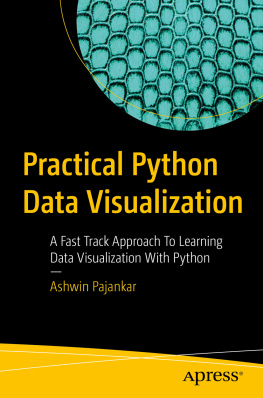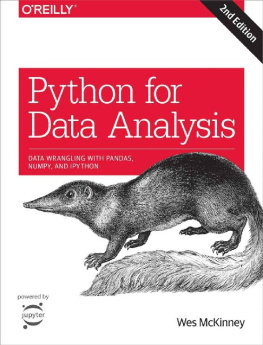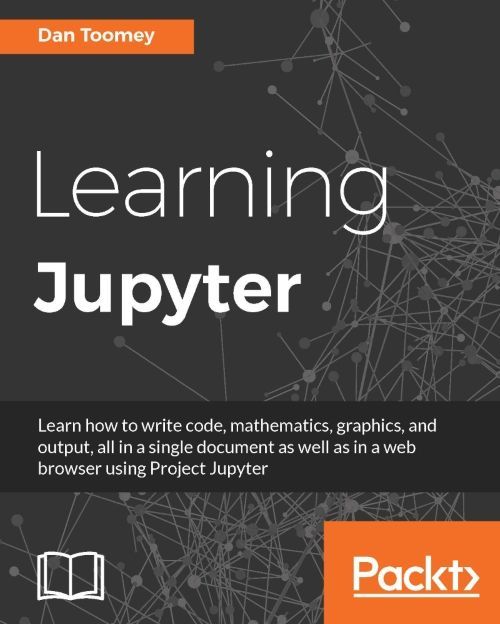Dan Toomey - Learning Jupyter
Here you can read online Dan Toomey - Learning Jupyter full text of the book (entire story) in english for free. Download pdf and epub, get meaning, cover and reviews about this ebook. year: 2016, publisher: Packt Publishing, genre: Computer. Description of the work, (preface) as well as reviews are available. Best literature library LitArk.com created for fans of good reading and offers a wide selection of genres:
Romance novel
Science fiction
Adventure
Detective
Science
History
Home and family
Prose
Art
Politics
Computer
Non-fiction
Religion
Business
Children
Humor
Choose a favorite category and find really read worthwhile books. Enjoy immersion in the world of imagination, feel the emotions of the characters or learn something new for yourself, make an fascinating discovery.

- Book:Learning Jupyter
- Author:
- Publisher:Packt Publishing
- Genre:
- Year:2016
- Rating:4 / 5
- Favourites:Add to favourites
- Your mark:
Learning Jupyter: summary, description and annotation
We offer to read an annotation, description, summary or preface (depends on what the author of the book "Learning Jupyter" wrote himself). If you haven't found the necessary information about the book — write in the comments, we will try to find it.
- Learn to write, execute, and comment your live code and formulae all under one roof using this unique guide
- This one-stop solution on Project Jupyter will teach you everything you need to know to perform scientific computation with ease
- This easy-to-follow, highly practical guide lets you forget your worries in scientific application development by leveraging big data tools such as Apache Spark, Python, R etc
Jupyter Notebook is a web-based environment that enables interactive computing in notebook documents. It allows you to create and share documents that contain live code, equations, visualizations, and explanatory text. The Jupyter Notebook system is extensively used in domains such as data cleaning and transformation, numerical simulation, statistical modeling, machine learning, and much more.
This book starts with a detailed overview of the Jupyter Notebook system and its installation in different environments. Next well help you will learn to integrate Jupyter system with different programming languages such as R, Python, JavaScript, and Julia and explore the various versions and packages that are compatible with the Notebook system. Moving ahead, you master interactive widgets, namespaces, and working with Jupyter in a multiuser mode.
Towards the end, you will use Jupyter with a big data set and will apply all the functionalities learned throughout the book.
What you will learn- Install and run the Jupyter Notebook system on your machine
- Implement programming languages such as R, Python, Julia, and JavaScript with Jupyter Notebook
- Use interactive widgets to manipulate and visualize data in real time
- Start sharing your Notebook with colleagues
- Invite your colleagues to work with you in the same Notebook
- Organize your Notebook using Jupyter namespaces
- Access big data in Jupyter
Dan Toomey has been developing applications for over 20 years. He has worked in a variety of industries and size companies in roles from sole contributor to VP/CTO level. For the last 10 years or so, he has been contracting to companies in the eastern Massachusetts area. Dan has been contracting under Dan Toomey Software Corp. Again, as a contractor developer in the area. Dan has also written R for Data Sciences with Packt Publishing.
Table of Contents- Introduction to Jupyter
- Jupyter Python Scripting
- Jupyter R Scripting
- Jupyter Julia Scripting
- Jupyter JavaScript Coding
- Interactive Widgets
- Sharing and Converting Jupyter Notebooks
- Multiuser Jupyter Notebooks
- Jupyter Scala
- Jupyter and Big Data
Dan Toomey: author's other books
Who wrote Learning Jupyter? Find out the surname, the name of the author of the book and a list of all author's works by series.



![Dan Toomey [Dan Toomey] - Jupyter for Data Science](/uploads/posts/book/119624/thumbs/dan-toomey-dan-toomey-jupyter-for-data-science.jpg)
![Joshua Cook [Joshua Cook] - Docker for Data Science: Building Scalable and Extensible Data Infrastructure Around the Jupyter Notebook Server](/uploads/posts/book/119616/thumbs/joshua-cook-joshua-cook-docker-for-data.jpg)


